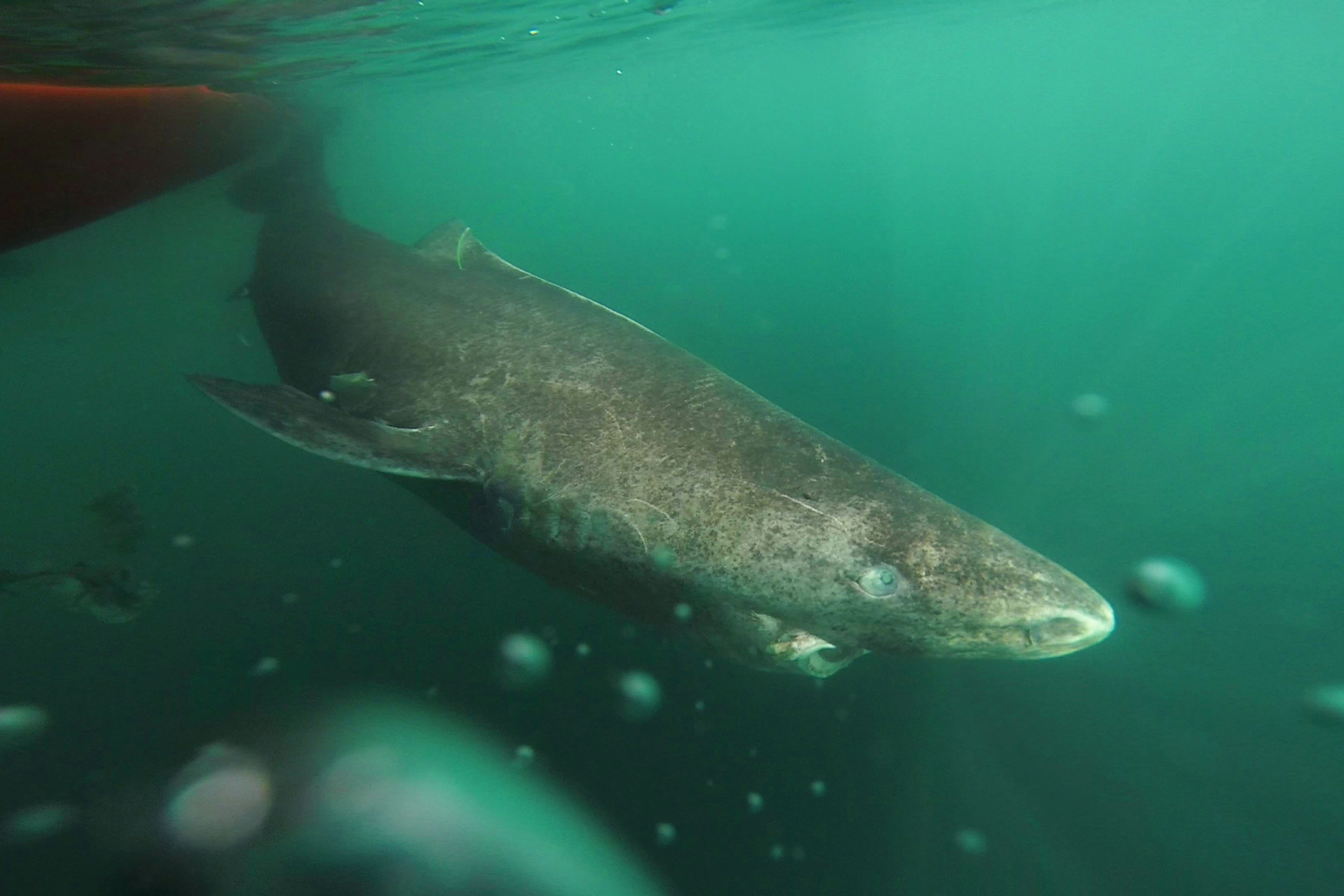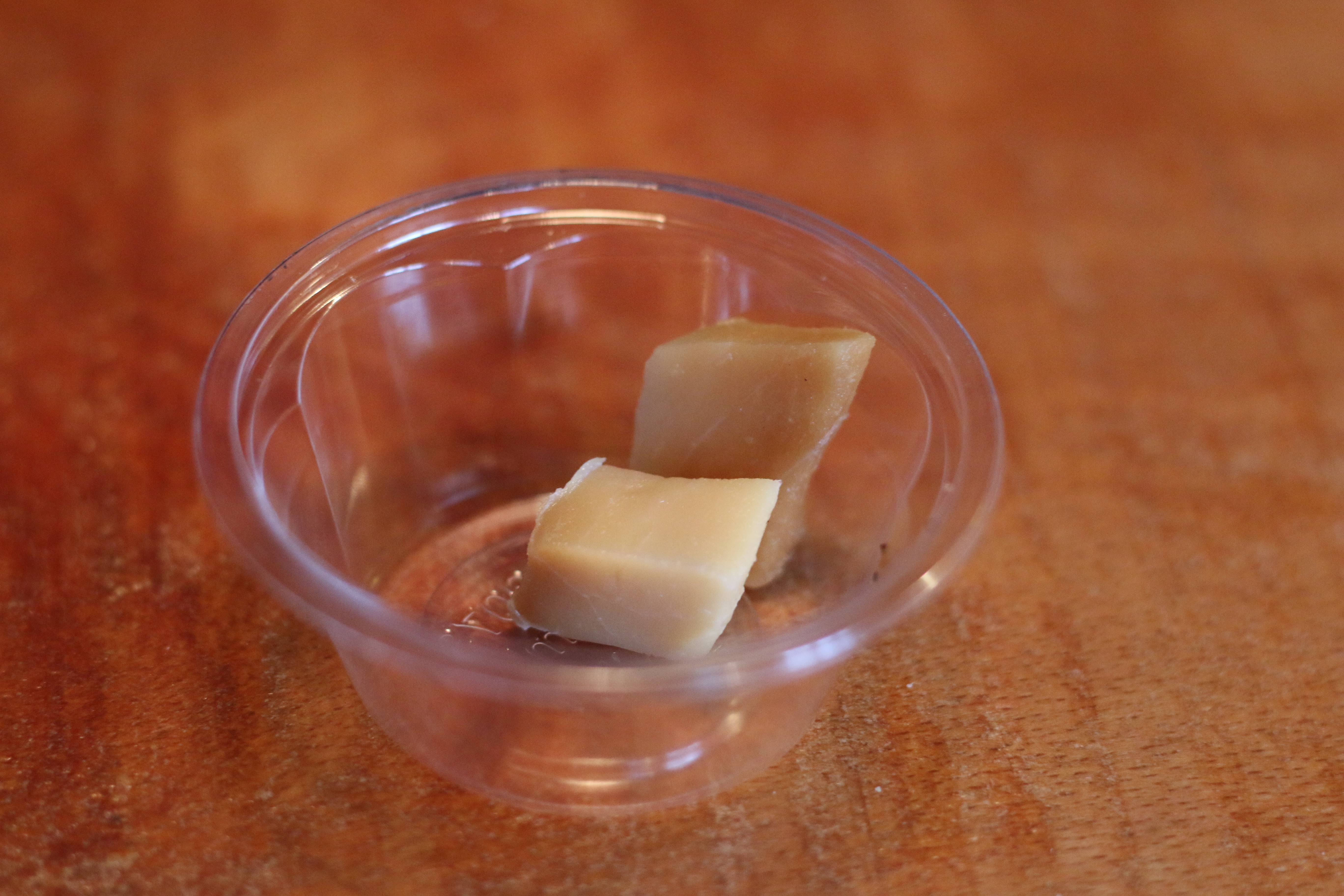Greenland shark is a large shark found in the cold waters of the northern Atlantic and Arctic Oceans. It is a member of a group known as sleeper sharks. Sleeper sharks are known for their slow movements and general lack of activity. Greenland sharks inhabit waters as deep as 7,200 feet (2,200 meters) during the summer. The sharks move to warmer shallow bays during the winter.

Greenland sharks have bulky bodies with small dorsal (back) fins and a rounded snout. They are dark brown or gray in color, but may have white spots or markings. Greenland sharks typically measure 10 to 16 feet (3 to 5 meters) long, but they may reach lengths of 23 feet (7 meters) or more. They may weigh over 2,200 pounds (1,000 kilograms).
Greenland sharks eat a diet that includes fish, crustaceans, and squid. They may also prey on marine mammals such as seals. They also scavenge on the bodies of dead birds or mammals, including reindeer and even polar bears.
Greenland sharks do not generate internal heat to keep their bodies from freezing, as do some other cold water sharks. Instead, they rely on chemicals in their tissues that act as a type of antifreeze. Many Greenland sharks are found with a unique parasitic copepod attached to the surface of one or both eyes. A parasite is a living thing that feeds off another living thing. Over time, this parasite may cause the shark to go blind. The shark has a keen sense of smell and may not rely on vision to catch prey.
Greenland sharks are ovoviviparous. The female protects the eggs within her body until they hatch. The young of ovoviviparous sharks are born alive. Greenland sharks may have a litter size of around 10 pups. They grow extremely slowly. Scientists use the lens of the eye to calculate the ages of individual sharks. They determined that the largest Greenland sharks studied were around 400 years old. Scientists believe the Greenland shark is the longest living of all vertebrates (animals with a backbone).

The meat of Greenland sharks is toxic and cannot be eaten unless it is dried or repeatedly boiled. However, these sharks are still fished in several Arctic countries. They are sometimes caught as bycatch in deepwater fishing nets. Bycatch includes fish and other marine animals that are accidentally captured along with target fish species. Scientists think that with their slow growth and long life span, Greenland sharks may not be able to reproduce until they are over 100 years old. This makes it difficult for them to recover from any population decline due to overfishing.

